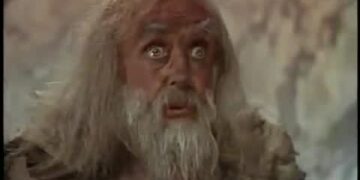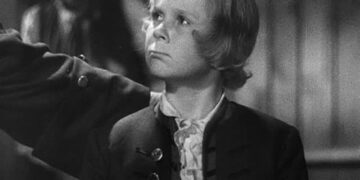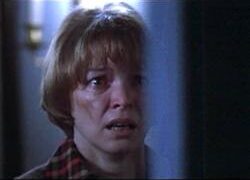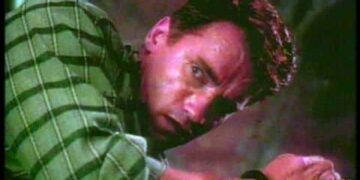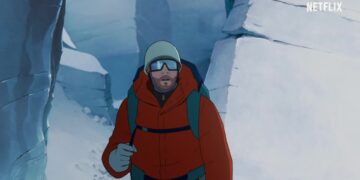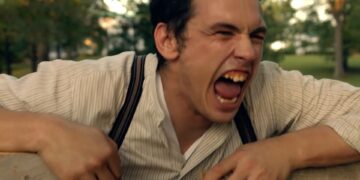Frankenstein; or, The Modern Prometheus, is a novel written by Mary Shelley in 1818.
The story has captivated readers and audiences for centuries, and its themes of creation, ambition, and the consequences of playing with the forces of nature are still relevant today.
James Whale’s 1931 classic film adaptation brought the story to life on the silver screen, introducing the iconic visual representation of Frankenstein’s monster that has become a cultural icon.
In this article, we’ll delve into the layers of Frankenstein, its story, characters, and the legacy it has left behind in literature, film, and popular culture.
Mary Shelley: A Brief Biography and Her Works
Mary Wollstonecraft Shelley was born on August 30, 1797, in London, England.
She was the daughter of the philosopher William Godwin and the feminist writer Mary Wollstonecraft. Mary Shelley grew up in a stimulating intellectual environment and began writing at a young age. She met the poet Percy Bysshe Shelley in 1814, and the two fell in love, eventually marrying in 1816 after his first wife’s death.
In 1816, Mary Shelley conceived the idea for Frankenstein while staying in Geneva, Switzerland, with her husband, the poet Lord Byron, and physician John Polidori. The group decided to hold a competition to see who could write the best horror story, and it was during this time that Mary began working on her novel. Frankenstein was published in 1818 when she was only 20 years old.
Besides Frankenstein, Mary Shelley wrote several other novels, including Valperga (1823), The Last Man (1826), and Falkner (1837). She also wrote numerous short stories, essays, and biographies. Mary Shelley passed away on February 1, 1851, in London, England.
The Story Unraveled: Book Summary of Frankenstein; or, The Modern Prometheus
Frankenstein tells the story of Victor Frankenstein, a young scientist who creates a grotesque, sapient creature in an unorthodox scientific experiment.
The novel is narrated through a series of letters between Robert Walton, an Arctic explorer, and his sister, Margaret. Walton encounters Victor Frankenstein near the North Pole and learns his story from their conversations.
Victor Frankenstein grew up in Geneva, Switzerland, where he became obsessed with the idea of creating life from non-living matter. After years of study and experimentation, he succeeds in his goal, but is horrified by the appearance of his creation and abandons it. The Creature, as it comes to be known, learns about the world and becomes increasingly intelligent, but is rejected by society due to its hideous appearance.
Desperate for companionship, the Creature demands that Victor create a mate for him. Victor initially agrees, but ultimately destroys the female creature before it is complete, fearing the consequences of creating another monster. Enraged, the Creature vows revenge and begins to kill those closest to Victor, including his best friend, Henry Clerval, and his wife, Elizabeth Lavenza. Victor dedicates the rest of his life to hunting down the Creature, eventually leading him to the Arctic, where he meets Walton and dies shortly after sharing his story.
From Page to Screen: James Whale’s 1931 Classic Movie Summary
James Whale’s 1931 film adaptation of Frankenstein takes some liberties with the source material but remains faithful to the core themes of the novel. The film stars Colin Clive as Victor Frankenstein, Mae Clarke as Elizabeth, and Boris Karloff as the iconic Monster.
In the movie, Victor Frankenstein is a scientist who becomes obsessed with the idea of creating life from dead tissue. He and his assistant, Fritz (played by Dwight Frye), gather body parts from various sources and assemble them into a human form. Frankenstein then harnesses the power of lightning to bring the Creature to life.
The Creature, while initially docile, becomes violent after Fritz torments it with fire. It escapes from the laboratory and inadvertently kills a young girl while trying to play with her. The townspeople, led by Victor’s former mentor Dr. Waldman (played by Edward Van Sloan), form a mob to hunt down the Creature.
The film culminates in a dramatic confrontation between Frankenstein and the Creature in a burning windmill, where the Creature seemingly perishes in the flames.
Who’s Who: Character Guide in Frankenstein
In both the novel and the film, the story of Frankenstein revolves around a small but memorable cast of characters.
Here, we briefly summarize the key players in this iconic tale:
- Victor Frankenstein: A brilliant but tormented scientist who creates the Creature in his quest to unlock the secrets of life and death.
- The Creature: Victor’s creation, a being assembled from dead tissue and brought to life through an unconventional scientific experiment. Despite its grotesque appearance, the Creature is intelligent and longs for companionship, but is rejected by society due to its appearance and turns to violence out of desperation.
- Elizabeth Lavenza: Victor’s adopted sister and later wife, who serves as a moral compass for Victor and serves as a victim of the Creature’s wrath.
- Henry Clerval: Victor’s best friend and confidant, who is killed by the Creature in retaliation for Victor’s abandonment.
- Robert Walton: An Arctic explorer who encounters Victor on his quest for glory and hears his story from beginning to end.
When and Where: Exploring the Timeline and Film Locations
The story of Frankenstein takes place in the late 18th and early 19th centuries, primarily in Switzerland and the Arctic. Mary Shelley drew inspiration from her travels in Switzerland and her experiences with the Romantic poets and their fascination with nature and the supernatural.
James Whale’s film adaptation is set in an ambiguous time period but is generally assumed to be set in the early 20th century. The movie was filmed primarily at Universal Studios in Hollywood, California, and features stunning sets and visual effects for its time.
Iconic Quotes from the Novel and Movie
Frankenstein is full of memorable lines that have become part of popular culture.
Here are just a few of the most iconic quotes from the novel and the movie:
- “I have love in me the likes of which you can scarcely imagine and rage the likes of which you would not believe. If I cannot satisfy the one, I will indulge the other.” – The Creature (novel)
- “It’s alive! It’s alive!” – Victor Frankenstein (movie)
- “Beware; for I am fearless, and therefore powerful.” – The Creature (novel)
- “I think you should hear this, Frankenstein. It comes from the brain of a genius, a scientist, and a poet, all rolled into one.” – Dr. Pretorius (movie)
The Soundtrack: Bernhard Kaun’s Contributions to the 1931 Classic
One of the most memorable aspects of James Whale’s Frankenstein is its haunting and evocative score, composed by Bernhard Kaun. The music is a crucial component of the film’s success, helping to set the mood and tone of each scene and heightening the drama and suspense.
Kaun was a prolific composer of film scores in the 1930s and 1940s and worked on many classic horror movies of the time. His contribution to Frankenstein is still celebrated today for its innovative use of sound and music in film.
Curiosities and Trivia: Frankenstein’s Lesser-Known Facts
Frankenstein has a rich history and many fascinating trivia and curiosities associated with it.
Here are just a few lesser-known facts about the novel and the movie:
- Mary Shelley was only 18 years old when she began writing Frankenstein and 21 when it was published.
- James Whale’s film was almost banned in several countries due to its graphic and disturbing content.
- Boris Karloff, who played the Creature in the movie, was initially uncredited in the film’s opening credits.
- The iconic design of the Creature’s makeup and costume was created by Jack Pierce, who also worked on many other classic horror films.
- The original title of the novel was “Frankenstein; or, The Modern Prometheus,” drawing parallels between Victor Frankenstein’s quest for knowledge and the Greek myth of Prometheus stealing fire from the gods.
Dressing the Part: Tips for Cosplay and Dressing Like Characters
Frankenstein has inspired countless interpretations and adaptations, including cosplay and costume design. Whether you’re looking to dress up as Victor Frankenstein, the Creature, or any other character from the story, there are plenty of ways to capture the essence of the novel and the film.
For Victor Frankenstein, consider a white lab coat and goggles, paired with black pants and dress shoes. The Creature‘s iconic look can be achieved with green body paint, a bald cap, and a tattered suit or jacket. Elizabeth Lavenza’s style is more traditional, with a long, flowing dress and simple accessories. Get creative and have fun with your costumes!
Exploring the Legacy: Remakes, Sequels, Spin-offs, and Other Media by James Whale
James Whale’s Frankenstein has had a lasting impact on popular culture, inspiring numerous remakes, sequels, spin-offs, and other media.
Some of the most notable adaptations include:
- The Bride of Frankenstein (1935), James Whale’s own sequel to his original film, featuring Elsa Lanchester as the titular character.
- Son of Frankenstein (1939), starring Boris Karloff as the Creature and Basil Rathbone as Victor’s son, who returns to his father’s castle to investigate his legacy.
- Young Frankenstein (1974), a comedic retelling of the story directed by Mel Brooks and starring Gene Wilder as Victor Frankenstein.
- Penny Dreadful (2014-2016), a TV series that features Frankenstein and his Creature as recurring characters, played by Harry Treadaway and Rory Kinnear, respectively.
Similar Media: Works That Resonate with Frankenstein’s Themes
Frankenstein’s themes of ambition, creation, and the consequences of playing god have resonated with audiences for over two centuries.
Here are just a few works of literature, film, and television that explore similar themes:
- Blade Runner (1982), a sci-fi classic that asks what it means to be human and explores the ethics of artificial intelligence.
- Jurassic Park (1993), a blockbuster film that explores the dangers of genetic engineering and the consequences of playing with nature.
- The Island of Dr. Moreau (1896), a novel by H.G. Wells that explores similar themes of mad science and the limits of human knowledge.
- Ex Machina (2014), a film that examines the relationship between humans and artificial intelligence and the ethical implications of creating sentient beings.
Other Works by Mary Shelley: Beyond the Monster
Mary Shelley’s legacy extends far beyond Frankenstein; she was a prolific writer and thinker who contributed much to the literary landscape of her time.
Here are a few of her other notable works:
- The Last Man (1826), a dystopian novel set in the late 21st century, following a global pandemic that wipes out most of humanity.
- Mathilda (1819), a short novel about a young woman who falls in love with her father and later commits suicide.
- Lodore (1835), a novel about a woman who tries to raise her son alone after her husband’s death and faces numerous obstacles along the way.
A Deeper Dive: Frankenstein’s Ending Explained
The ending of Frankenstein has been the subject of much debate and interpretation over the years.
Some readers see it as a cautionary tale about the dangers of ambition and playing with the forces of nature, while others view it as a meditation on the nature of humanity and the relationship between creator and creation.
One interpretation of the ending is that it represents a moral lesson about the dangers of ambition and the consequences of playing with the forces of nature. Victor Frankenstein’s obsession with creating life ultimately leads to his downfall, as he is consumed by his own creation and driven to madness and despair.
Book Club Questions for Frankenstein: Engaging Discussions
Frankenstein is a rich and complex novel that raises many thought-provoking questions and themes.
Here are a few discussion questions that book clubs and groups can use to explore the novel’s ideas and characters:
- What does the novel say about the relationship between creator and creation? How does this relationship evolve over the course of the story?
- What is the role of science and technology in the novel? How does Mary Shelley use these themes to explore larger questions about human nature and the limits of knowledge?
- How does the novel address issues of gender and sexuality? What do the female characters in the story represent, and how do they influence the themes and ideas of the novel?
- What is the significance of the novel’s framing device, with Robert Walton’s letters to his sister? How does this structure influence the reader’s understanding of the story?
Interactive Frankenstein: Video Games Based on the Classic
Frankenstein has also been the basis for several video games over the years, allowing players to immerse themselves in the story and explore its themes in new and exciting ways.
Some of the most notable Frankenstein-inspired video games include:
- Frankenstein: The Monster Returns (1990), an action-adventure game for the Nintendo Entertainment System (NES) that follows the Creature’s quest for revenge against Victor Frankenstein.
- Mary Shelley’s Frankenstein (1994), a first-person shooter game for various platforms that loosely follows the plot of the novel and the movie.
- The Incredible Adventures of Van Helsing (2013), an action role-playing game that features a variety of monsters and creatures inspired by classic horror literature, including Frankenstein’s Creature.
A Monster’s Journey: Travel Guide to Visit Frankenstein Locations
For fans of Frankenstein, there are several locations around the world that are associated with the novel and the movie.
Here are a few destinations that are worth visiting for a deeper appreciation of the story and its themes:
- Geneva, Switzerland: Mary Shelley spent much of her time in Geneva and used it as the setting for much of the novel.
- Ingolstadt, Germany: The city where Victor Frankenstein attends university and begins his experiments.
- Hollywood, California: The site of Universal Studios, where James Whale’s Frankenstein was filmed.
- Edinburgh, Scotland: The birthplace of Mary Shelley’s mother, Mary Wollstonecraft, and a city with a rich literary history.
Conclusion: The Enduring Legacy of Frankenstein
Frankenstein has endured for over two centuries as a classic of horror literature and a timeless exploration of human ambition, creation, and the consequences of playing with the forces of nature.
Mary Shelley’s novel and James Whale’s film adaptation have left an indelible mark on popular culture, inspiring countless adaptations, interpretations, and homages over the years.
Whether you’re a fan of the novel, the movie, or both, there is much to appreciate and explore in the world of Frankenstein.
From the iconic characters and quotes to the rich themes and ideas, there is something for everyone in this enduring tale of science gone wrong.


